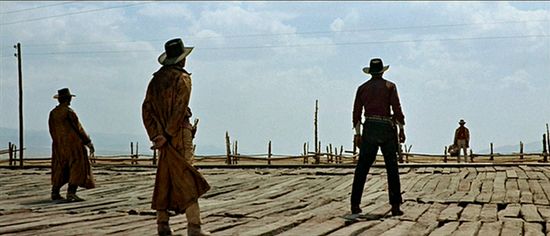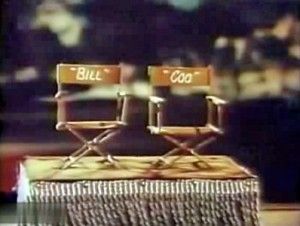Martin Scorsese’s Film School vs. Roger Ebert’s Parakeets
Compiling and comparing movie lists
/https://tf-cmsv2-smithsonianmag-media.s3.amazonaws.com/filer/20120229022117CatPeople-thumb.jpg)
During a four-hour interview with Fast Company, director Martin Scorsese cited 85 film titles. Not so surprising for someone so steeped in cinema history, as screenwriter John Logan pointed out in my posting on Hugo: “Marty Scorsese is the world’s greatest cineaste. In his head he carries an archive of practically every film ever made. When we were working, astounding references would sort of tumble out of him.”
Author Rick Tetzeli repurposed snippets and outtakes of the interview to come up with Martin Scorsese’s Film School: The 85 Films You Need To See To Know Anything About Film. Not really a fair title, as it’s doubtful that Scorsese intended to improvise a course curriculum while publicizing Hugo. On any given day the director might have mentioned 85 other films, 85 other directors, 85 other memorable cinematic moments.
And why 85? Had the interview lasted longer, he might have hit 100 films, the sweet spot for the many, and increasingly maligned, AFI lists. Asked point-blank which films he thought were essential, Scorsese might have limited himself to 10, 20 or 25 titles.
As a snapshot of the director’s tastes on one particular day, the list displays an impressively broad range, reaching back to early silent films and on up to titles made by contemporaries like Francis Ford Coppola, Michael Cimino and Robert Altman (who gets 6 titles, including HealtH, cited by Ronald Reagan as “the world’s worst movie”). Does the absence of Steven Spielberg or George Lucas mean anything, especially considering Scorsese was finishing up his first film aimed at children? Can we infer anything from the other films and directors that didn’t make the cut?
Some hasty observations:
- Nineteen (or 20, if you consider The Third Man British) of the 85 films are foreign, roughly 20%.
- Nine titles were directed by Roberto Rossellini, over 10 percent of the films you would see at the “Scorsese Film School.”
- Countries and regions not represented: Asia, Africa, South America, Scandinavia, Germany, Poland, Russia. So, no films by Carl Dreyer, Sergei Eisenstein, Luis Buñuel, F.W. Murnau, Yasujirō Ozu, Akira Kurosawa, Satyajit Ray. No German expressionism, Soviet montage, Bollywood, or martial arts.
Scorsese cites three silent films, one understandably by Georges Méliès. The other two are an Italian short I frankly know nothing about (I segreti dell’anima) and Rex Ingram’s epic The Four Horsemen of the Apocalypse (1921), a significant film to be sure but at its time a pretty mainstream crowd-pleaser. Omitted: Edison, the Lumière brothers, Biograph, and D.W. Griffith. No Mary Pickford, Thomas Ince, Douglas Fairbanks, Cecil B. De Mille. More important, no silent comedy, perhaps the crowning achievement of silent film. Chaplin, Keaton, Mack Sennett, Max Linder, Hal Roach, Leo McCarey, Laurel & Hardy — all missing.
For that matter, where are the sound comedies? The “Scorsese Film School” ignores the Marx Brothers, W.C. Fields, Ernst Lubitsch, Bob Hope, Myrna Loy, and too many others to list. The list lacks any animation (no Walt Disney, no Bugs Bunny, no Popeye), documentaries (goodbye, Robert Flaherty and Frederick Wiseman), or experimental films (adios Ralph Steiner, Stan Brakhage, and Ernie Gehr).
Among the really glaring omissions: Howard Hawks, William Wyler, John Huston, Nicholas Ray. Five Orson Welles films, but no The Magnificent Ambersons? Three Anthony Mann films, but no The Naked Spur?

Heck, the list doesn’t even include films that Scorsese loves so much that they appear in his own movies, like The Searchers and The Big Heat (in fact, Fritz Lang didn’t make the cut at all). Or movies whose restorations he helped finance, like Once Upon a Time in the West (no Sergio Leone anywhere else either).
By now I hope you can see how pointless this exercise is. It’s insulting to suggest that Scorsese doesn’t know or care about the films that aren’t on his list, just as it’s wrong to pretend that seeing this list of 85 films will make you an expert on cinema.
Is there a list that will make you an expert? The National Film Registry, which now has 575 titles, makes a stab in that direction. (29 of Scorsese’s 85 movies are on the Registry.) In writing two books about the Registry, I’ve bumped into some of its flaws (why no Woody Woodpecker or Coal Miner’s Daughter?), but the big problem with the list is that it’s becoming a bit unwieldy. Right now it’s almost a two-year course.

Roger Ebert has made his feelings about lists well known (like this Wall Street Journal article), but he’s also offered a different approach: lists that don’t mean anything. Take his Top 16 movies involving parakeets, which immediately drew its own controversy (no Oscar-winning, super-saccharine Bill and Coo?)
On the NitrateVille forum, film preservationist David Shepard wrote, “When AFI was promoting a run of its ‘hundred greatest’ this-and-that lists, some friends and I made a list of films with ‘Greatest’ in the title that actually weren’t much good.” He’s right — try it yourself on IMDb.
In the long run, how valuable are these lists anyway? Doctors cite list-making as a symptom of obsessive-compulsive disorder, and luckily enough, here is a list of the top OCD-related films. (But where’s Conspiracy Theory?)
Here’s a list format that can’t cause any trouble: titles that when combined, form a sentence:
While You Were Sleeping (1995)
W.E. (2011)
Saw (2004)
The Meanest Man in the World (1943)
Feudin’, Fussin’ and A-Fightin’ (1948)
Without Honor (1949)
Four Jacks and a Jill (1942)
Down in the Delta (1998)
In the Heat of the Night (1967)
By the Light of the Silvery Moon (1953)
How many can you compile?
/https://tf-cmsv2-smithsonianmag-media.s3.amazonaws.com/accounts/headshot/daniel-eagan-240.jpg)
/https://tf-cmsv2-smithsonianmag-media.s3.amazonaws.com/accounts/headshot/daniel-eagan-240.jpg)